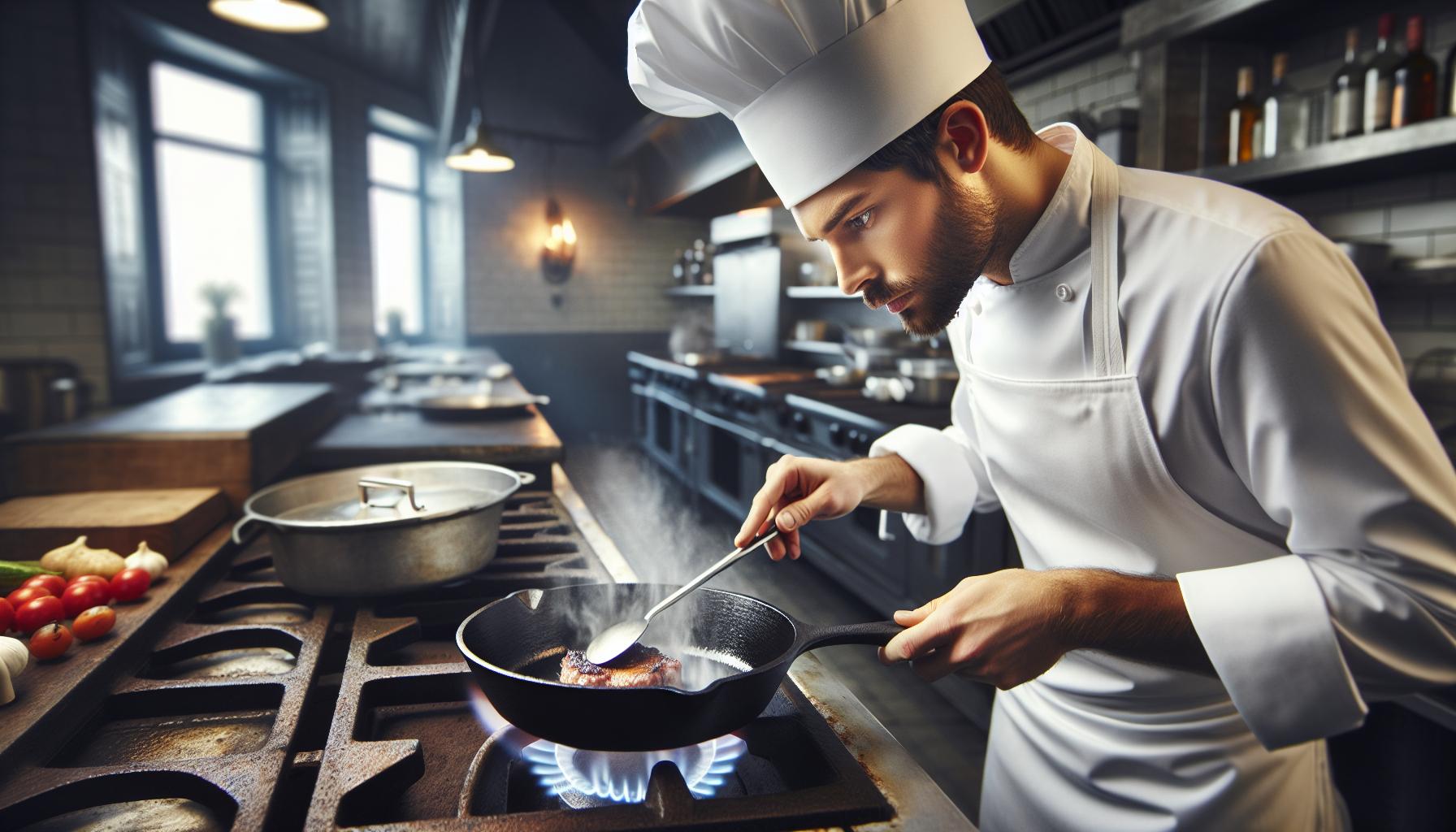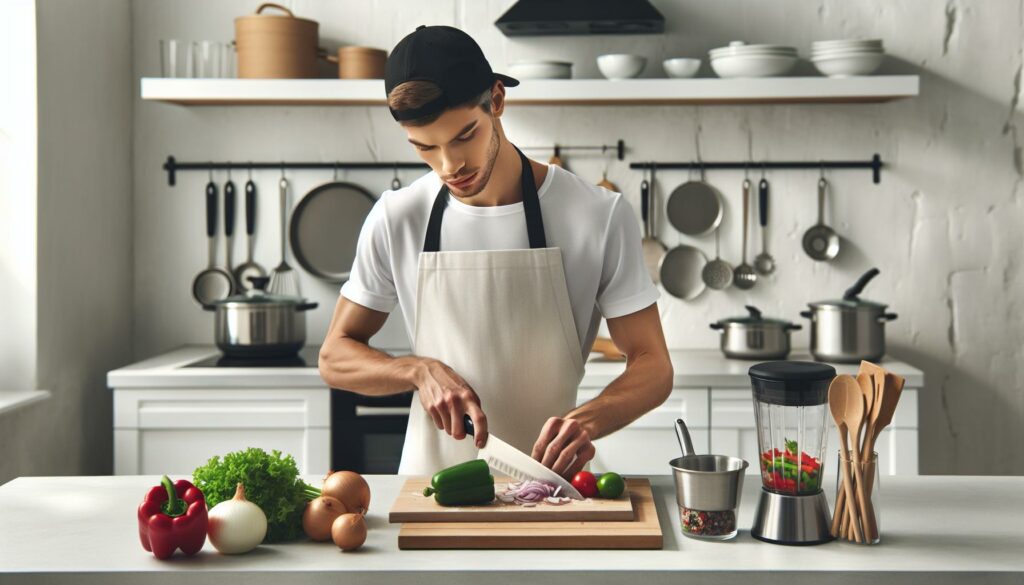Learning to cook isn’t just about following recipes – it’s about mastering fundamental techniques that transform ordinary ingredients into extraordinary meals. From perfecting knife skills to understanding heat control these essential cooking methods serve as building blocks for culinary success.
Whether you’re a complete beginner who can barely boil water or an intermediate cook looking to level up your kitchen game there’s always room to grow. The beauty of cooking techniques lies in their versatility – once you’ve mastered a basic method like sautéing you’ll be able to apply it to countless dishes across various cuisines. Think of it as adding new tools to your culinary toolbox where each technique opens up endless possibilities for creative cooking.
Learn Cooking Techniques
A well-equipped kitchen forms the foundation for learning cooking techniques. The right tools enable precise execution of cooking methods while ensuring safety and efficiency in the kitchen.
Must-Have Utensils
Every kitchen requires a core set of utensils for basic food preparation:
- Chef’s knife (8-inch) for chopping vegetables, slicing meat, and mincing herbs
- Cutting boards (2 separate ones) for meat and produce
- Measuring cups and spoons for precise ingredient portions
- Mixing bowls (3 different sizes) for combining ingredients
- Wooden spoons for stirring sauces and batters
- Spatulas (silicone) for flipping and scraping
- Colander for draining pasta and washing produce
- Peeler for vegetables and fruits
- Whisk for beating eggs and emulsifying dressings
- Tongs for handling hot foods and serving
- Food processor for chopping, pureeing, and grinding
- Stand mixer or hand mixer for batters and doughs
- Blender for smoothies, sauces, and soups
- Rice cooker for perfectly cooked grains
- Electric kettle for boiling water quickly
- Microwave for reheating and quick cooking
- Kitchen scale for precise measurements
- Timer for tracking cooking duration
- Instant-read thermometer for checking meat doneness
- Hand grater for cheese and vegetables
| Appliance Type | Average Cost | Lifespan (Years) |
|---|---|---|
| Food Processor | $100-200 | 5-10 |
| Stand Mixer | $200-400 | 10-15 |
| Blender | $50-150 | 3-7 |
| Rice Cooker | $30-100 | 4-8 |
Fundamental Cooking Methods

Cooking methods fall into three distinct categories based on how heat transfers to food. Each method produces unique flavors textures through specific applications of heat.
Dry Heat Techniques
Dry heat cooking applies direct heat to food without moisture. Roasting transforms proteins at temperatures between 300-450°F, creating brown crusts on meats like chicken beef or pork. Sautéing requires a hot pan with minimal oil, moving food constantly to achieve even browning in 5-7 minutes. Grilling exposes food to intense direct heat, typically 400-450°F, imparting distinctive char marks sear marks on steaks vegetables. Deep frying submerges food in 350-375°F oil, creating crispy exteriors while maintaining moist interiors in 3-8 minutes.
Moist Heat Techniques
Moist heat cooking relies on liquid water vapor to transfer heat into food. Steaming suspends ingredients above boiling water, preserving nutrients textures in vegetables fish for 5-10 minutes. Poaching gently cooks delicate items like eggs fish in liquid at 160-180°F. Braising combines initial searing with slow cooking in liquid at 300°F, transforming tough cuts of meat into tender dishes over 2-3 hours. Simmering maintains temperatures between 185-205°F, ideal for stocks soups stews.
Combination Cooking
Combination methods merge dry moist heat techniques for optimal results. Stir-frying starts with dry heat at 400°F, then incorporates small amounts of liquid creating steam. Pressure cooking uses sealed vessels to raise boiling points to 250°F, reducing cooking times by 70%. Pan-roasting begins with stovetop searing transitions to oven finishing at 375°F, perfect for thick cuts of meat. These methods create complex flavors textures while maintaining moisture efficiency.
Knife Skills and Food Preparation

Mastering knife skills forms the foundation of efficient food preparation. Proper knife techniques enhance cooking speed, ensure consistency in cooking times, and promote kitchen safety.
Proper Knife Handling
The pinch grip technique establishes control over a chef’s knife by placing the thumb and index finger on opposite sides of the blade near the handle. The remaining three fingers wrap around the handle to create stability during cutting motions. A stable cutting surface requires positioning the body squarely facing the cutting board with feet shoulder-width apart. The guide hand forms a claw shape, tucking fingertips under while keeping knuckles perpendicular to the blade. This position protects fingers from cuts while maintaining contact with the food item being cut.
Basic Cutting Techniques
Essential cutting techniques include dicing, mincing, julienne, and chiffonade. Dicing creates uniform cubes in sizes ranging from ⅛ inch to ¾ inch, ensuring even cooking time for vegetables like onions or potatoes. Mincing produces finely chopped ingredients measuring 1/16 inch or smaller, ideal for garlic or herbs. Julienne cuts form matchstick-shaped pieces measuring ⅛ inch × ⅛ inch × 2 inches, perfect for stir-fries or garnishes. Chiffonade creates ribbon-like strips by stacking leafy herbs or greens, rolling them tightly, then slicing across the roll at 1/8-inch intervals.
| Cutting Technique | Size Range | Common Applications |
|---|---|---|
| Dice | ⅛” – ¾” cubes | Vegetables, fruits |
| Mince | 1/16″ or smaller | Garlic, herbs |
| Julienne | ⅛” × ⅛” × 2″ | Vegetables, garnishes |
| Chiffonade | ⅛” strips | Leafy herbs, greens |
Temperature Control and Timing

Temperature control separates amateur cooks from professionals by ensuring consistent results across different dishes. Mastering heat levels creates perfectly cooked meals while preventing under or overcooking.
Heat Management
Different cooking methods require specific temperature ranges for optimal results. High heat (400-450°F) creates a golden-brown crust on meats through the Maillard reaction. Medium heat (325-375°F) allows even cooking of proteins while maintaining moisture. Low heat (225-275°F) tenderizes tough cuts through slow cooking processes. Gas stoves provide instant temperature adjustments while electric cooktops need time to respond to setting changes. Induction cooktops offer precise temperature control within 1-2 degrees. Cast iron pans maintain steady temperatures but take 5-7 minutes to heat evenly.
Cooking Times and Doneness
Internal temperature readings guarantee food safety across various proteins. Chicken requires 165°F internal temperature for safe consumption. Beef ranges from 125°F for rare to 160°F for well done. Fish cooks quickly at 145°F while maintaining moisture. Digital thermometers provide readings within 2-3 seconds for accuracy. Visual indicators help determine doneness: red meat springs back when medium-rare, fish flakes easily when done. Resting times allow temperature carryover: 5-10 minutes for steaks, 15-20 minutes for roasts. Checking doneness at multiple points ensures even cooking throughout the food.
Understanding Ingredients
Ingredients form the foundation of any culinary creation. Their quality quality selection preparation directly influence the final dish’s taste texture appearance.
Seasoning and Flavoring
Proper seasoning transforms ordinary ingredients into extraordinary dishes. Salt enhances natural flavors when added in stages throughout cooking rather than all at once. Black pepper adds depth while fresh herbs contribute brightness: basil for Italian dishes parsley for Mediterranean meals thyme for roasted meats. Acidic ingredients like lemon juice vinegar balance rich flavors brighten dishes. Umami boosters including soy sauce mushrooms aged cheeses add complexity depth to savory preparations.
Working with Different Food Groups
Proteins require specific handling techniques to achieve optimal results. Fish cooks quickly at high temperatures while tough meat cuts benefit from slow cooking methods. Fresh vegetables maintain nutrients colors when blanched briefly in salted water then shocked in ice. Grains absorb flavors best when toasted before adding liquid: rice for pilaf quinoa for salads. Dairy products stabilize at room temperature before cooking preventing curdling separation: cream for sauces cheese for gratins. Root vegetables develop sweetness through roasting while leafy greens retain texture through quick sautéing.
Recipe Reading and Measurement
Recipe reading mastery forms the bedrock of successful cooking, enabling precise execution of culinary techniques. Understanding recipe terminology and measurement conversions ensures consistent results across different cooking methods.
Common Cooking Terms
Professional recipes contain specific terminology that indicates distinct cooking actions. Here’s a breakdown of essential cooking terms:
- Al dente: Pasta cooked firm to bite, typically 8-10 minutes
- Blanch: Quick-boil vegetables followed by ice bath submersion
- Fold: Incorporate light ingredients into heavy ones using gentle upward motion
- Proof: Allow yeast dough to rise at room temperature
- Reduce: Boil liquid to evaporate water content, intensifying flavors
- Sear: Cook meat at high heat to create brown crust
- Score: Create shallow cuts in food surface
- Temper: Gradually warm cold ingredients to prevent curdling
Converting Units
Common measurement conversions streamline recipe adaptation across different systems:
| Imperial | Metric | Volume |
|---|---|---|
| 1 cup | 240 ml | 16 tablespoons |
| 1 tablespoon | 15 ml | 3 teaspoons |
| 1 pound | 454 grams | – |
| 1 ounce | 28.35 grams | 2 tablespoons |
| 1 pint | 473 ml | 2 cups |
Digital kitchen scales provide precise measurements for baking recipes requiring gram measurements. Temperature conversions follow this formula: Celsius = (Fahrenheit – 32) × 5/9.
Building Flavor Profiles
Creating complex flavor profiles requires understanding taste elements plus mastering ingredient combinations. Developing this skill transforms basic dishes into memorable culinary experiences.
Balancing Tastes
Professional chefs rely on five fundamental taste elements: sweet, salty, sour, bitter umami. Creating balanced dishes involves combining these tastes in specific ratios:
- Salt enhances other flavors at 0.5-1% of total food weight
- Sugar balances acidity at a 1:1 ratio with acidic ingredients
- Acidic elements like citrus juice or vinegar brighten dishes at 1-2 teaspoons per serving
- Umami ingredients (mushrooms, aged cheese, soy sauce) add depth at 5-10% of protein weight
- Bitter components from dark greens or coffee provide complexity in small amounts
Layering Ingredients
Layering flavors creates depth through strategic ingredient addition timing:
- Base ingredients form the foundation
- Aromatics (onions garlic ginger)
- Spices toasted in oil
- Stocks broths
- Building blocks enhance the base
- Fresh herbs added midway
- Vegetables according to cooking time
- Proteins seared first or added last
- Finishing elements add final notes
- Fresh herbs as garnish
- Acid (lemon juice vinegar)
- Texture elements (nuts seeds)
Each layer contributes distinct flavors that combine into a cohesive taste profile.
Experiences That Last a Lifetime
Mastering cooking techniques transforms everyday meals into culinary masterpieces. From knife skills and temperature control to ingredient knowledge and flavor building these fundamental skills create the foundation for culinary success. Whether someone’s just starting or looking to enhance their skills the journey of learning to cook is ongoing and rewarding.
With the right tools proper techniques and a solid understanding of cooking principles anyone can create delicious meals with confidence. As skills develop cooking becomes less about following strict recipes and more about creative expression in the kitchen. This natural progression leads to more enjoyable and successful cooking experiences that last a lifetime.

